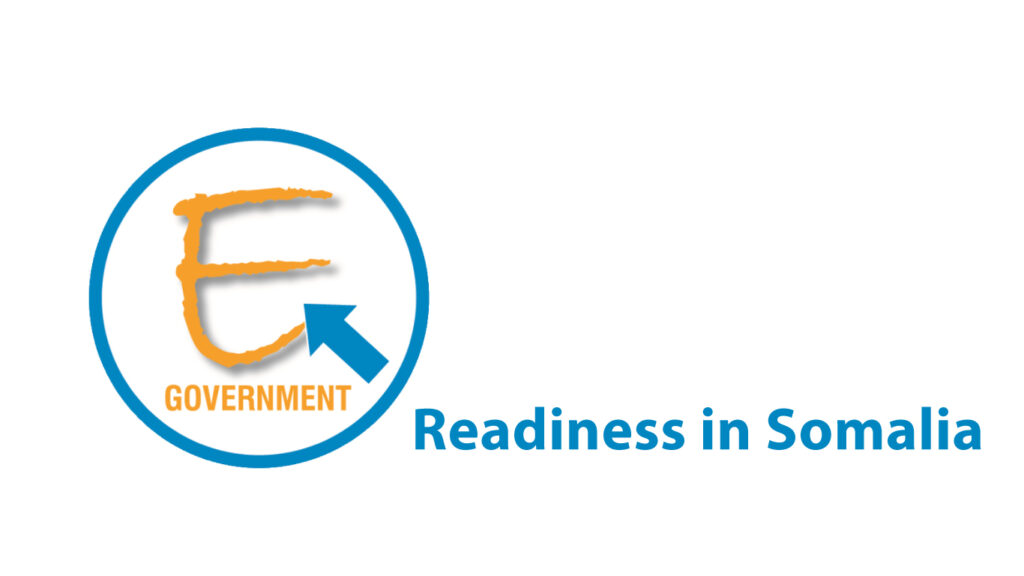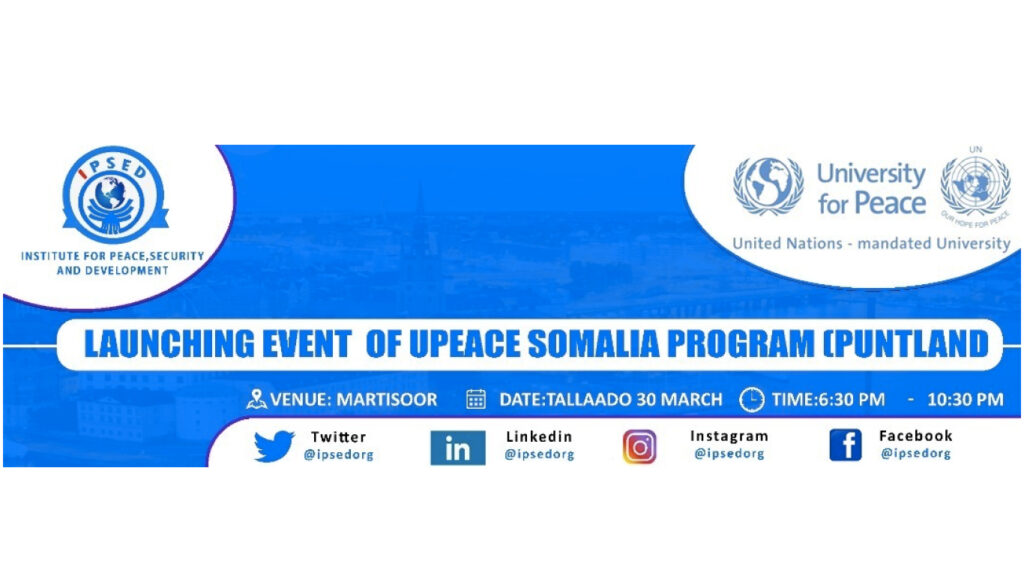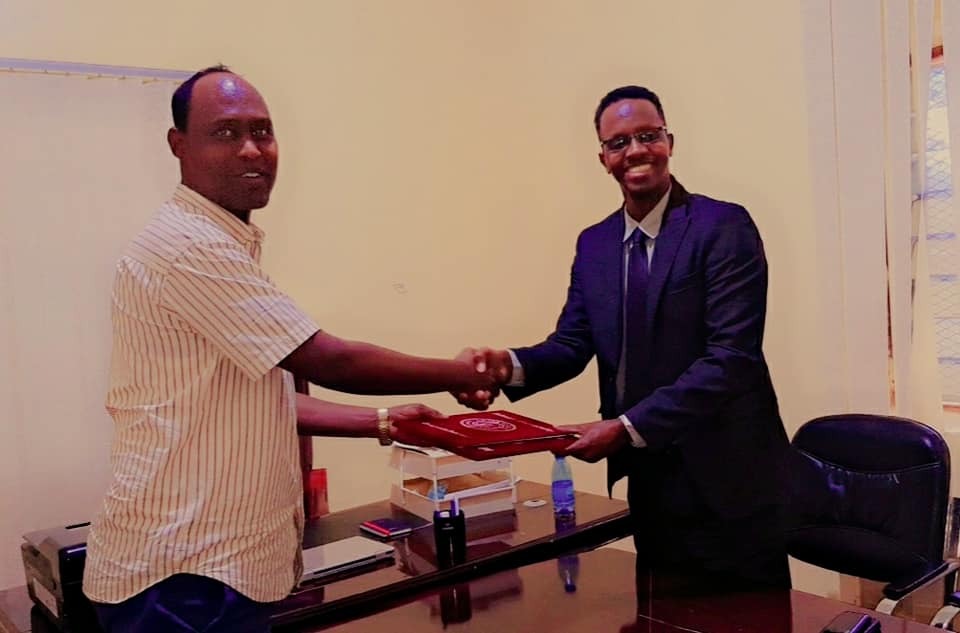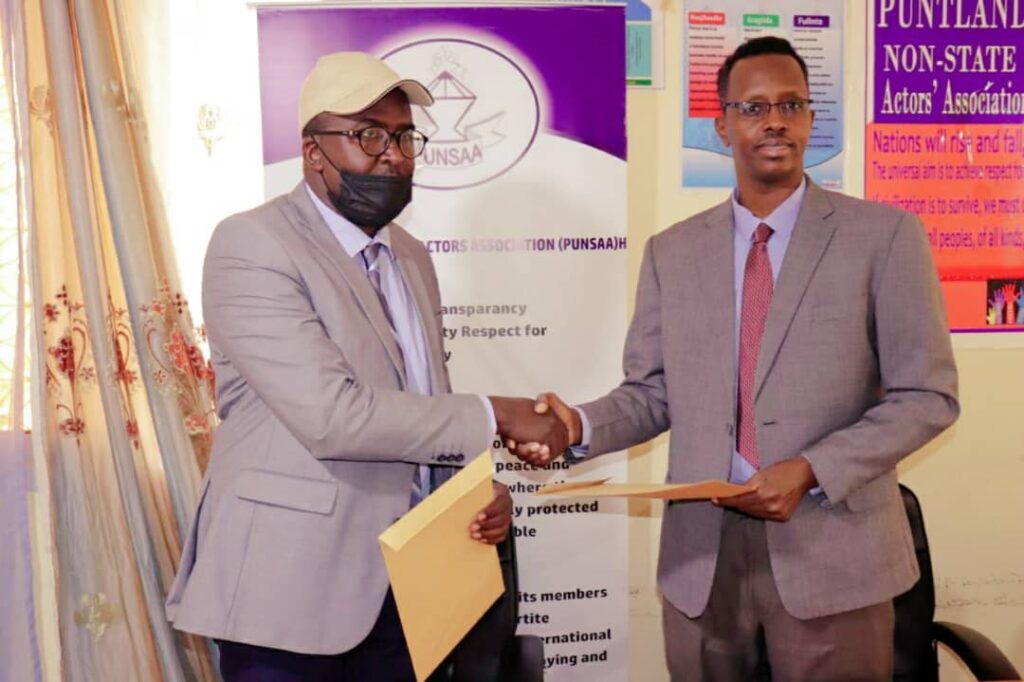Author: Mohamed Nuh
E-Government readiness in Somalia!
Abstract
This paper discusses e-government readiness in Somalia. The objective of this study will
hopefully help understanding e-government readiness in Somalia and the possibilities of developing e-government solutions where effective services may be provided to the citizens with sharp reduction of costs and time . Part of this analysis depends on United Nations indicators by E-government Development Index (EGDI) as well as United Nations Department of Economic and Social Affair (UN DESA).
Keywords: E-government, EGDI, UN DESA
Introduction
The World Summit for the Information Society Plan of Action had recommended for all
governments in the world to “Develop national e-Government initiatives and services, at all
levels, adapted to the needs of citizens and business, to achieve a more efficient allocation of
resources and public goods” [1]. However, implementation of E-government solution is
extremely complex [2] and involves complimentary changes to administrative practices and
business processes [3], the benefits of expected outcome are substantial including but not limited
to reduction of service processing costs, improvement of service delivery, transparency as well
as citizen’s participation in public administration decisions. However, accepting and
implementing e-government solution may extremely be difficult due to perceived changes that
may have an enormous impact in entire governance procedure [4].
The E-Government Development Index (EGDI) is a composite measure of the capacity and
willingness of countries to use e-government for ICT-led development [5]. The EGDI uses
averages of three indices, such as Online Service Index (OSI), Telecommunication infrastructure
Index (TII) and Human Capital Index (HCI).
This paper is organized as follows: In section 2, discusses literature review of e-government
programs related aspects including E-government definitions. Section 3, e-government types will
be discussed. Section 4, E-government readiness in Somalia will be analyzed. Finally conclusion
and further suggestions will be done in Section 5.
Definition of E-Government
In general, Government’s production is very information intensive, thus most government’s
services consists of creating and communicating information. E-government can be defined as a
way for government to use that information using ICT technologies such as web-based
applications to provide both businesses and citizens with convenient access to relevant
government information and consequently improving citizens’ participation in democratic
decision making process and institutions. Since ICT is bedrock for e-government solution, ICT
applications are expected to further enhance the delivery of services to citizens while improving
the production and management processes of government.
Researchers have indicated that e-government solution is valuable strategy for any government
to boost their economy through administrative efficiency, gain the trust of citizens, theoretically
uproot corruption of government officials, and eventually encourage democratic governance [6],
[7]. Therefore, the goal of e-government is to create effective business environment, not
customer inline, but online, encouraging public participation while improving productivity and
efficiency of government agencies and quality of life for disadvantaged communities [8].
In March 2001, the Third Global Forum enunciated the following key important points
pertaining to e-Government initiative [9]
- E-Government can improve the quality of life for citizens with reduction of costs and
time - E-Government will transform the processes and structure of government for less
hierarchical in public administration while empowering civil servants to serve citizens
better - E-government should be given serious consideration also in the developing countries for
its potential for stronger institutional capacity, for better service delivery to citizens and
business and for reducing corruption.
Even though, some developed countries have successfully started implementing e-government
solutions, the challenges others have met is formidable, but fortunately not insurmountable.
E-government solution may also create tremendous opportunities for public administration to
become more citizen-centric, to promote governance which is based transparency, less
corruption and empower democratic institutions while providing efficient and cost effective
service since service are the real face of Government.
Any service that any government provides can be categorized as following:
Informational Services, Interactive Services and Transactional Services [10]
In addition, collecting, processing as well as analyzing and disseminating of information by e-government solution needs a specialized knowledge [11].
Types of e-government
E-government can be classified into 8 different categories as explained in the following.
Government-to-Citizen (G2C): providing services to citizens and enhancing relationship between
government and citizens though technology.
Citizen-to-Government (C2G): transaction, information and communication services between
citizens and government such as e-tax solution.
Government-to-Business (G2B): providing electronic services to business communities such as
e-procurement, e-transactions as well as initiating market-place for government purchases.
Business-to-Government (B2G): Providing services, goods and information to government
through request for proposals (RFPs), request for information (RFI) or request for quotations
(RFQs)
Government-to-Employee (G2E):providing services and/or information to employee to improve
required skills and enhance internal communications between them and make paperless e-office
initiatives possible
Government-to-Government (G2G):distribution of information and enhancing data sharing and
access, better communication between departments and agencies of the governments.
Government-to-Nonprofit (G2N): provision of Information and communication to nonprofit
organizations, social organizations as well as local political parties and Legislature by
government.
Nonprofit-to-Government (N2G): information and communication exchanges between
government and nonprofit organizations, social organizations as well as local political parties etc.
EGDI E-Government Readiness Ranking
The UN Nations E-Government readiness survey conducts a comparative assessment of the 192
UN members states shows the e-readiness of each government [12].
While several governments are in the process strategizing the role and benefits of e-government
solutions, some governments have already initiated e-government projects with very some
services deployed online [13].
The E-Government Readiness Index is a composite index comprising the web measure index, the
telecommunication infrastructure index and the human capital index. [14].
The Web Measure Index that is used for e-government readiness is based upon a four-stage
model that builds upon the previous level of sophistication of a state’s online presence.
The model defines four stages of E-Government Development scale namely: emerging presence,
enhanced presence, interactive presence and transactional presence [15]
Emerging Presence is the first stage that represents limited, basic static information where
online presence comprises an official website that may link to government ministries, regional
and local government.[15]
Enhanced presence is a second stage where government provides static online information that
comprises reports, laws and regulations, policies as well as downloadable documents where
online users may able to access through dedicated government websites.[15]
Transactional presence is more interactive stage when citizens may able to dynamically interact
with provided online resources from government, such as passport/birth/marriage certificates, tax
payment as well as other payments including fines. Furthermore, since sensitive information may
be interchanged between users including user identities, credit card information and so on, secure
link are used in this stage [15].
Connected (Networked) presence is an integrated and dynamic stage where citizens’
participation in decision making processes is not only encouraged but also facilitated through
web sites that can be characterized by an integration of G2G, G2C and C2G (and reverse)
interactions.[15]
The department of Economic and Social Affairs of the United Nations Secretariat released the egovernment readiness rankings for all countries in 2003-2018. The top 10 countries in eGovernment Survey 2018 is depicted in the following table I followed by EGDI regional index - in Table II. [15].
- A country’s ranking in the survey is determined by the EGDI – E-Government Development
Index, which is a weighted average of three normalized scores on scope and quality of Online
Service Index (OSI), Development status of telecommunication infrastructure
Telecommunication Infrastructure Index, TII and Inherent human capital Human Capital Index,
HCI [16].
Telecommunication infrastructure is a composite weighted average of five primary indicators,
namely: mobile subscription /100 inhabitants, Telephone lines/100 inhabitants, and wireless
broadband/100 inhabitants, wireless broadband/100 inhabitants and individual using internet (%
of population) [16], while Human Capital Index (HCI) consists of four components, namely: (i)
adult literacy rate; (ii) the combined primary, secondary and tertiary gross enrolment ratio; (iii)
expected years of schooling; and (iv) average years of schooling[16] and third component which
is Online Service Index (OSI) is a composite normalized score derived on the basis on an Online
Service Questionnaire which consists of a list of 140 questions[16].
The EGDI readiness ranking shows that the average of European countries (0.7727) is higher
than the maximum index of Africa (0.6678) which is close to the world average (0.5303).
Furthermore, EGDI ranking articulates that countries with high e-Government readiness have a
strong economy which may explain the strong link between good governance, efficient pubic
administration and economic growth [17] [18][19][20][21]
E-Government readiness in Somalia
Somalia which covers 637,337 square kilometers of land locates in easternmost of Horn of
Africa and occupies an extremely important geographical position between Arabia, southwest
Asia and sub-Saharan Africa.
Somalia as unitary system based country collapsed in 1991 and it took around 30 years to emerge
as federal country hence characterized as the longest failed state in the world.
Even though Somalia had not had any functioning government for nearly three decades, It had
leapfrogged the traditional fixed line telecommunication solutions into mobile technology, thus
creating one of the most efficient mobile money solution in Africa where 73% of population
regularly use it. [22]
Somalia is probably ahead of several other developing countries when it comes to mobile money.
While in many African countries mobile operators are still pondering about the possibilities to
incentivize customers to maintain balances in their mobile money wallets, Somalia operators
have already partnered with local retailers and merchants to ensure smooth digital exchanges,
even for low-value transactions [23].
Furthermore, about 7 out of 10 Somali citizens use mobile money services with estimated of 155
million mobile money transactions a month with the value of $2.7 billion a month [24].
The following table III shows one of the EGDI components, TII index. Even though, Somalia’s
TII index is still lower than Sub-Saharan Average, but there is steady progress.
Tabe IV shows Somalia’s EGDI index of last three years comparing to Sub-Saharan Average.
Again, improvement of EGDI index can be observed. - E-Participation Index (EPI) is used to measure citizen’s participation in decision-making process
as well as enhancing information accessibility and government services which will have a
positive impact of society. Even though EPI is a regarded as a supplementary index to the EGDI,
it extends dimension of the Survey by focusing on the use of online services to facilitate
provision of information by governments to citizens [25].
According to UN E-Government knowledge base [25], EPI framework consists of the following - E-information: Information accessibility and enabling citizens’ participation
- E-consultation: encouraging citizens to contribute policies and services
- E-decision-making: enabling citizens to participate decision making processes
The Table (V) shows that Somalia’s EPI between 2012 and 2018 where some EPI improvements
can be observed [26]. -
- Conclusion
The E-Government Development Index (EGDI) is a composite of indexes such as Online Service
Index (OSI), Telecommunication infrastructure Index (TII) and Human Capital Index (HCI) used
for measuring the willingness and capabilities of countries for developing e-Government
solutions using ICT-based technologies.
Somalia is arguably ahead of many other developing countries when it comes to mobile money.
About 70% Somali citizens use mobile money services for both personal and business activities
where about 155 million mobile money transactions occur a month with the value of $2.7 billion
a month [27].
Somalia’s Telecommunication and Infrastructure Index has improved tremendously while HCI
and OSI indexes are still low.
Even though Somalia’s EGDI indexes are significantly low, Somalia’s government site
https://opm.gov.so/en/cabinet provides a single entry of portal to allow users to access more than
20 different ministerial sites.
However, there are a lot of changes in Somalia after it collapsed in 1991, such as tremendous
growth of the private sector caused by economic deregulation and privatization. As a market
economy has replaced a centrally planned economy, development had become market-driven
rather than government-led.[28].
Consequently, private sector has further moved in to provide basic infrastructure and institutions
including telecommunications, water, electricity, transportation as well as education.
Therefore, lack of restrictive policies, regulation, and control has encouraged free competition
and dynamic entrepreneurship among Somalis.
Government’s lack of capacity in curbing corruption and mismanagement of public
administration caused massive market failure, such as monopolies, taxes paid only to avoid
harassments, lack of standards in telecommunications and increasing legal disputes in land
ownership. For instance, since there is no effective land registration system in Somalia (both
state and federal level) vendor, whom may not even be the owner of the land, may able to
successfully sell same piece of land to two different buyers within short period of time and
consequently causing prolonged legal disputes. Therefore, cost effective and efficient Egovernment system of Land Registration Solution (LRS) could be used to tackle these issues.
This solution could be the first G2C type of solution that may be implemented in Somalia, where
citizens can seamlessly use it for checking current property owner’s contact information,
property size, location and so on before conducting any purchase. - REFERENCES
[1] WSIS (2005). World Summit on the Information Society: Tunis Agenda for the
Information Society. U. Nations, United Nations/ITU.
[2] L. Carter and W. Vishanth, “E-Government Adoption: A Cultural Comparison,” Springer
Science, Vol. 10, No. 4, 2008, pp. 473-482.
[3] National Research Council (2002). Information technology, research, innovation, and e-
Government. Washington, D.C., National Academy Press.
[4] Z. Kovacic, “The Impact of National Culture on World- wide E-Government Readiness,”
Informing Science Journal, Vol. 8, 2005, pp. 143-158.
[5] World Wide Web: http://www.wikiprogress.org/index.php/EGovernment_Readiness_Index
(accessed 1/9/2018)
[6] Elbahnasawy, N. (2014). E-government, internet adoption, and corruption: an empirical
investigation. World Development, 57, 114–126
[7] Jun, K., Wang, F., & Wang, D. (2014). E-Government Use and Perceived Government
Transparency and Service Capacity. Public Performance & Management Review, 38(1),
125-151.
[8] Patricia J. Pascual, “ e-Government, “ e-ASEAN Task Force UNDPAPDIP, May 2003,
P. 10-12
[9] Benchmarking E-government: A Global Perspective(2002), Assessing the Progress of
the UN Member States, (https://publicadministration.un.org/egovkb/Portals/egovkb/
Documents/un/English.pdf)
[10] Ibid.
[11] Reinventing Government in the Information Age: International Practices in IT Public
Sector Reform Editor: Richard Heeks
[12] United Nations Department of Economic and Social Affairs (UNDESA), “ Global E-
Government Survey 2003, “ p-4,20-35,58,76, 98
[13] United Nations Department of Economic and Social Affairs, “ EGovernment Survey 2008,
From e-Government to Connected government, “ p-12, 15-22,27-30,33-34,36-41,180,199
[14] World Wide Web: http://www.wikiprogress.org/index.php/EGovernment_Readiness_Index
(accessed 1/9/2018)
[15] World Wide Web: https://publicadministration.un.org/egovkb/en-us/About/Overview/-E-
Government/Online-Service ((accessed 3/9/2018)
[16] 2018 UN e-Government Survey: insight and anticipations, EGM on Innovation and
Technology for achieving the 2030 Development Agenda 5-7 December 2017, UN-
ESCWA
(https://www.unescwa.org/sites/www.unescwa.org/files/events/files/vincenzo-
aquaro-2018-e-government-survey-en_0.pdf)
[17] World Bank, “Definition of e-Government, ” available online at http.www.worldbank.org
[18] United Nations Department of Economic and Social Affairs, “ EGovernment Survey 2008,
From e-Government to Connected government, “ p-12, 15-22,27-30,33-34,36-41,180,199
[19] UNDESA, “ Global E-government Readiness Report 2005: From eGovernment to e-
Inclusion, “ p 25-35, 58,198,203,207,212,227,232
[20] United Nations Department of Economic and Social Affairs, “ Global EGovernment
Readiness Report 2004, Towards Access for Opportunity, “ p-23-32,40-43,134,138,143,148
[21] European Commision, “i2010 e-Government Action Plan: Accelerating e-Government in
Europe for the Benefit of All, “ 2006, p-3
[22] Watkins,K.,and M.Quattri. 2014.Lost in intermediation: How Excessive Charges
Undermine the Benefits of Remittances for Africa.Overseas Development
Institute,London.)
[23] World Wide Web: https://openknowledge.worldbank.org/bitstream/handle/ 10986/ 30417/
129780.pdf?sequence=4&isAllowed=y
[24] World Bank 2017b: Mobile Money in Somali Ecosystem Mapping: Stakeholder Mapping
Report. Washington,DC.
[25] World Wide Web: https://publicadministration.un.org/egovkb/en-us/About/Overview/E-
Participation (Accessed 20/9/2018)
[26] World Wide Web: https://publicadministration.un.org/egovkb/en-us/Data/Country-
Information/id/158-Somalia (Accessed 20/9/2018)
[27] World Bank 2017b: Mobile Money in Somali Ecosystem Mapping: Stakeholder Mapping
Report. Washington,DC.
[28] Human Development Report 2001: Somalia”, UNDP: Nairobi, Kenya, p.41






